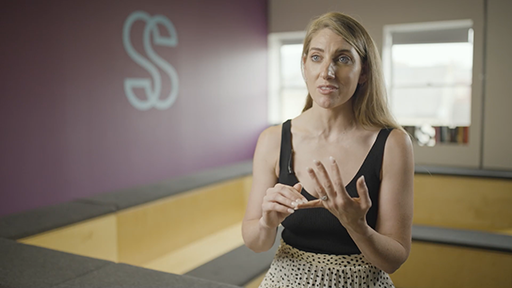3.2 Active listening
According to Cuncic (2022):
Active listening refers to a pattern of listening that keeps you engaged with your conversation partner in a positive way. It is the process of listening attentively while someone else speaks, paraphrasing and reflecting back what is said, and withholding judgment and advice. When you practice active listening, you make the other person feel heard and valued.
Activity 23 How well do you listen?
Have you ever been in a meeting where you can see someone checking their phone, or you feel they are surreptitiously checking their emails? You might even hear whispering conversations and interruptions from other employees. How did that make you feel?
Have you ever been in a really important meeting and you have not listened? Why was that? How would that person feel if they ever found out that you were not fully present? Were there any implications of you not listening fully in that meeting? Did it result in any miscommunications or errors? Or did you ‘get away with it’?
Can you identify any triggers that cause you to stop actively listening and paying attention?
How can you be present when listening?
We now have even more ways to communicate than ever. But how do you actively listen? And how do you stay connected? As Dropbox’s Director of International HR, Laura Ryan, says: ‘it’s the big one, it’s the one everyone talks about all the time’ (HRD Connect, 2021) and she does this by really doing her best to listen on calls and shut down other distractions. Switch on ‘do not disturb’ on computers, shut down emails, turn off your phone or even put it in another room – actively listen. As a result, Ryan says it really does help build relationships and solve problems faster with less churn and a happier team. Most importantly, it deepens trust and gives people a sense of value and that you have listened.
When we are present, we are giving our full attention. When we are present we are more grounded and able to give a better response. Being present also sharpens our awareness of what is going on around us. We will ask better questions, understand more and simply be the best version of ourselves (Prince, 2022).
In the video below, contributors share their insights into the importance of effective communication.

Transcript
How to apply active listening skills
You don’t have to apply all of the tips below all of the time, but take the time to be mindful of your impact on your team during both in-person and remote calls to show that you are actively listening.
You could take some of the following actions if you are comfortable to do so:
- Pay full attention and give them your undivided attention. So put away your distractions and pay attention to verbal and non-verbal communication cues.
- Show you are listening by making eye contact or reacting to their words. You don’t just have to nod and smile but be authentic in your reactions – asking questions for instance.
- Have empathy and listen to what they have to say – resist the urge to give unsolicited opinions, form solutions in your head or interrupt them. If you want to improve your meetings, consider making them more inclusive for full range of diversity in the team.
Not everyone listens in the same way: hold neuroinclusive meetings
Meetings, and particularly video meetings, can be really tiring and, as Amanda Kirby (2021) writes: ‘Being a facilitator can be a bit like being the conductor of an orchestra all playing different tunes and starting off at different times.’
Calling people in and making eye contact with them is not as easy remotely as it is when you are all in the same physical room, and turn-taking and not knowing when to speak and when to not speak can be difficult. We make judgements that someone is not interested or not listening if their camera is off but to someone who is neurodivergent it can actually be a way of them really giving you their full attention and listening. Just because someone is off camera don’t fall into the trap of assuming they are asleep or doing something else.
There are many tips on holding neuroinclusive meetings in this LinkedIn blog [Tip: hold Ctrl and click a link to open it in a new tab. (Hide tip)] written by Professor Amanda Kirby. She also talks about setting ground rules and ensuring to discuss the length and purpose of the meeting, encouraging people to change names on Zoom links as to how they wish to be addressed, maybe even spelling it phonetically or including gender preferred pronouns.
As a facilitator of meetings you might want to include polls and allow for comments in chat boxes to get ideas from others. It also allows you a chance to minimise conformity bias to give employees space to disagree and for those who might feel uncomfortable not speaking up. You could follow up after meetings by asking if there was any support that would have helped for the meeting.
Another way to enable participants to really listen is to give them a chance to listen again by sharing a recording of the meeting.
